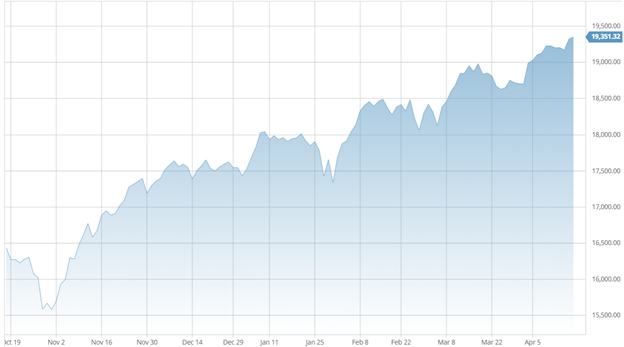March was another record-breaking month for Canada’s housing market, as strong demand and rising inventories led to more closings across the country. The gains were underpinned by a strong labour market and cautious optimism that Canada’s economic recovery was gaining momentum. Signs of recovery in the condo market also suggested that Canadians were in search of more affordable housing options than what’s currently being offered in the single-detached market.
Canada’s Housing Market: By the Numbers
National home sales rose 5.2% in March, according to the Canadian Real Estate Association, or CREA. Gains were led by Greater Vancouver, Calgary, Edmonton, Ottawa and Hamilton-Burlington. A total of 76,259 residential properties traded hands during the month, beating the previous record by nearly 22,000 transactions.
On an annual basis, sales activity rose 76.2%, CREA reported.
Much of the gains were attributed to a sharp rise in new listings—an area of the market that had negatively impacted transactions in previous months. The number of new properties to hit the market rose 7.5% between February and March.
The MLS Home Price Index, or HPI, rose 3.1% from February and 20.1% compared with March 2020.
Canada’s red-hot housing market is raising alarm bells for the Office of the Superintendent of Financial Institutions (OSFI), which recently proposed new ‘stress test’ guidelines to tighten mortgage qualification rules. The bank regulator is proposing a new benchmark rate to determine whether buyers would qualify for an uninsured mortgage. That rate would be set at 5.25%, which is well above the current threshold of Canada’s six largest lenders. The proposed rule change is open for comment until May 7, and any final changes will be disclosed May 24. OSFI expects the rule change to come into effect June 1.
The new guidelines, which are intended to promote financial stability, could restrict the upward movement in home values over the short term if more buyers fail to qualify for an uninsured loan. However, over the medium to longer time frames, market fundamentals such as supply and demand will continue to dictate housing trends. Canada is currently facing an acute shortage of residential real estate as demand for single-family properties continues to rise. This trend has intensified during the pandemic, as remote work trends have contributed to a frenzy of demand for spacious homes away from city centres.
Condo Market Heating Up: RBC
Following nearly a year of downward pressure on big-city condo markets, the tide appears to be shifting, according to RBC Economics. In a new report authored by economist Robert Hogue, demand for condominiums in places like Vancouver is shown to be rising considerably. In the Greater Vancouver Area alone, Hogue shows that 2,697 condos were sold in March, more than double the rate of March 2020.
Hogue says he expects “inventories to shrink as condos’ growing affordability advantage over other categories fuels buyer interest.” He noted:
“Condo sales have picked up in recent months in several large markets, including Vancouver, Calgary, Toronto, Ottawa and Montreal.”
Labour Recovery Broadens
Canada added workers at a faster clip at the end of the first quarter, offering more tangible proof that the economic recovery was gaining momentum. Employers added 303,000 workers to payrolls in March, far exceeding expectations, according to Statistics Canada. With the gains, overall employment was just 1.5% lower than February 2020, just before the first wave of COVID-19 swept the country. Gains were reported in both full-time and part-time employment.
The unemployment rate fell 0.7 percentage point to 7.5%, the lowest since the pandemic began.
Stocks Soar to New Highs
Wall Street and Canadian stocks rallied at the start of the second quarter, as rebounding corporate earnings, highly accommodative central-bank policies and prospects for a broad economic recovery continued to fuel equity prices. Canada’s benchmark TSX Composite Index rose 3% during the first two weeks of April and has now gained 11% since the year began.
In the United States, the benchmark S&P 500 Index notched multiple milestones in April, including its first daily closes above 4,000 and 4,100. The S&P 500 is now up over 12% for the year. The Dow Jones Industrial Average also rose to record levels, setting new highs above 34,200.
A measure of implied volatility known as the CBOE VIX fell to yearly lows in April, signaling calmer trading conditions for Wall Street over the next 30 days. The VIX briefly fell below 16 on a scale of 1-100, where 20 represents the historic average.
Conclusion and Summary
Canada’s economic recovery could face short-term resistance following the recent resurgence of COVID-19 cases. Quebec moved three cities into lockdown on March 31. The province of Ontario implemented similar measures just a few days later and announced a four-week stay-at-home order on April 7. That order was extended by two weeks on April 16.
Prime Minister Justin Trudeau announced on April 10 that Canada expects to receive 44 million doses of COVID-19 vaccines by July.
Vaccine distribution is essential for Canada’s economic rebound, according to the Conference Board. A resumption of energy, tourism and exports should aid the nation’s recovery in the second half of the year.
What Happens Next?
CMI Financial Group will continue to analyze market changes and keep you updated on a regular basis. To learn more about our investment opportunities fill out the contact form below, and one of our Investment Managers will reach out to you within 24 hours.